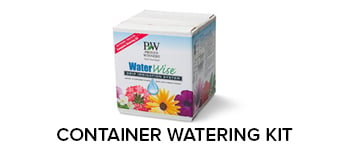How To Garden
Learn how to plant and care for vegetables, flowers, and more—even if you're a beginning gardener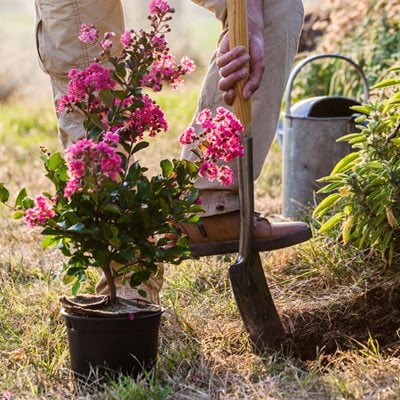
Photo by: BIOSPHOTO / Alamy.
Gardening is about finding the right combination of sunlight, fertile soil, and water to make your plants thrive. It's also about fulfilling your passion, so select plants you love. Use the resources here as a starting point, and in no time you’ll have a beautiful garden, no matter what level of gardening experience you have.
On this page:- GARDENING BASICS
- GARDEN PESTS, PLANT DISEASES, & OTHER PROBLEMS
- HOW TO GROW ANNUALS, PERENNIALS, SHRUBS, BULBS
- HOW TO GROW VEGETABLES & HERBS
- HOW TO GROW GORGEOUS FLOWERS
- HOW TO GARDEN INDOORS
- GARDEN-INSPIRED DIY PROJECTS
- COMMON GARDENING TERMS
GARDENING BASICS
Beginning gardeners are often intimidated by the process of how to start a garden and care for it successfully—after all, there's a lot involved. From amending your soil with high-quality organic matter to pruning shrubs, you'll find answers and advice for essential gardening tasks.

Flourishing gardens begin at the roots. Here are the ground rules for preparing your soil.
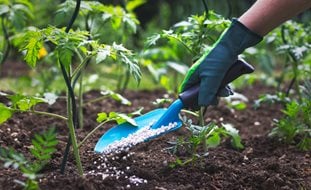
Compare types of fertilizers and learn when and how to feed your plants for a healthier garden.

Get the dirt on composting: the benefits, what to include (and what not to), and finding the right balance.

Why you should mulch, how to mulch, and what are the best types of mulch to use in your garden.

Discover which irrigation system is best for watering your garden.

Make your plants healthier and more productive by mastering these four basic techniques.
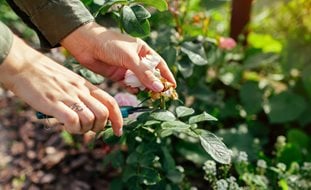
Learn why, how and when to deadhead your garden plants
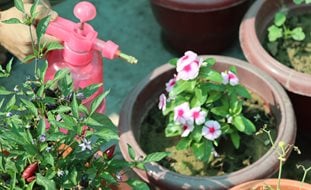
Learn how and when to use this natural pesticide on your indoor and outdoor plants.

Get a head start and grow your favorites by starting seeds at home.

Containers are as complicated as they are chic—and worth every minute of your effort.

The basic tools that every gardener-beginner or advanced-needs in their shed.

Advice for daily and seasonal care and maintenance for garden tools, including cleaning and storage.
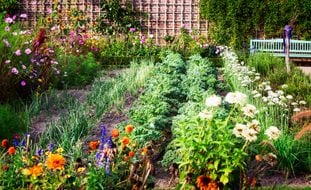
Discover what it takes to create an organically grown garden using natural methods.

13 tips to help you water your summer garden properly, from what time to water to how to keep moisture in the soil.
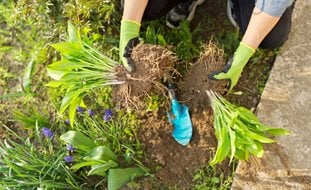
An essential task that keeps plants healthy, encourages better blooms, and helps you expand your garden.
PESTS, DISEASES, & OTHER GARDEN PROBLEMS
Learn how to safely and naturally deal with common pests, diseases, and weeds that can wreak havoc on your garden.
See more: Garden Pests, Plant Diseases, & Other Garden Problems

Have a garden full of plants that deer love to eat? Replace them with these attractive, easy-care alternatives.

Eliminate aphids from your plants and garden naturally and safely.

12 plants to grow not only their color and fragrance, but also their ability to keep mosquitoes away.

Are grubs eating your plant roots? Discover safe, environmentally friendly ways to get rid of them.

Keep indoor and outdoor plants healthy by eradicating these tiny, common pests.

Learn ways to safely and effectively treat and prevent powdery mildew in your garden.
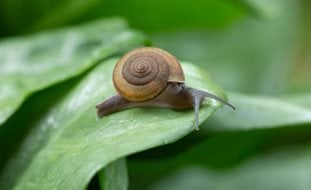
Learn 8 eco-friendly control methods for stopping these destructive pests in their tracks.
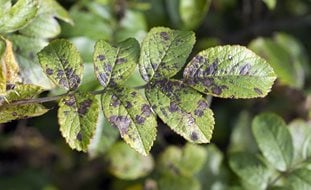
Learn how to prevent, manage, and treat black spot disease on roses.
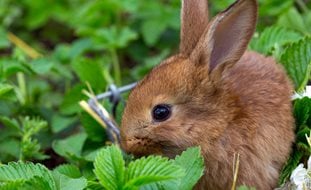
All-natural ways to keep these cute little critters from devouring your garden’s plants.
HOW TO GROW ANNUALS, PERENNIALS, SHRUBS, BULBS
Learn how to grow different types of plants and their uses in the garden. Understand the differences between them and what growing conditions they do best in.

How to use annual plants and flowers to add seasonal personality to your garden.

How to use perennial flowers and plants for year-after-year color in your garden.

A guide to growing gorgeous shrubs to provide structure, winter interest, and seasonal color in your garden.

Understanding the difference between annuals & perennials, and why they are both an essential part of your garden.

Learn how to properly buy, plant, grow and care for spring- and summer-blooming bulbs.
HOW TO GROW VEGETABLES & HERBS
Many beginning gardeners find the process of growing their own food rewarding, and not as difficult as they anticipated. Whether you’re looking to start with just a few tomatoes or you’re planning to create a full-fledged kitchen garden, doing your homework on how to plant, care for, and harvest your crops will be valuable.
See more: Vegetable Garden Ideas, Design, & What to Grow

Follow these 6 steps and you'll be on your way to growing your own food.

How to start a vegetable garden in containers. Perfect for patios, balconies, and small spaces.

Learn how to lay out and build raised beds to grow veggies right at home.

From artichokes to turnips, there are plenty of veggies to grow in your spring garden.

Spice up your landscape and kitchen with these indoor & outdoor herb garden ideas.

Liven up you garden and taste palette with these tried-and-true favorites.
HOW TO GROW GORGEOUS FLOWERS
Starting a flower garden doesn’t have to be daunting—whether you choose to grow from seed or young plants. Plan your own flower garden, get suggestions for easy-to-grow flowers, and soon you’ll have lovely flowers everywhere.

Learn how to start a flower garden with advice on soil testing, color choices, and planting flowers for cutting.

Discover some of the best easy-to-grow plants to grow in your first garden.

Ten essential steps for ensuring beautiful rose bushes year after year.
HOW TO GARDEN INDOORS
When winter arrives, your gardening doesn’t have to stop. Try your hand at growing a few plants indoors and you’ll find that it isn’t too hard. Learn how to keep your houseplants happy with proper care and placement.

You can fill every room of your home with greenery by choosing these versatile, easy-care houseplants.

Learn how to make a terrarium, the best plants for terrariums, care, maintenance and more.

If you enjoy houseplants, consider cultivating a window garden—ideal for showing off plants in the winter.

Learn how to get branches of flowering trees and shrubs to blooming early in just four easy steps.

Early fall is the time to get bulbs ready for winter blooms indoors.
GARDEN-INSPIRED DIY PROJECTS
Looking for a fun project? Get how to info for using flowers, branches, and other items from your garden to create clothing, décor, and more.

DIY garden projects to try: from a garden under glass to an easy-to-make water garden, you'll find something you love.

Use the plants in your garden to create beautiful patterned fabric that can be made into clothing or a framed work of art.

A step-by-step guide about how to create striking flower arrangemenets at home.
COMMON GARDENING TERMS
Basic Types of Plants:
- Annual: Plants that grow, flower, set seed, and die all in one growing season
- Perennial: Plants that come back year after year; some are evergreen, some are deciduous
- Shrub: Woody plants that have several main stems; some are evergreen, some are deciduous
Evergreen: Plants that do not go dormant and keep their leaves through winter
Deciduous: Plants that go dormant and drop their leaves in winter
Zone: There are 11 different growing zones in the U.S. and Canada based on the lowest average temperature each area receives during winter. Knowing what zone you are gardening in allows you to pick plants that will withstand the coldest expected temperature for your area. Read more: Zone Map.
Exposure: The amount of sun or shade a plant needs
- Full sun: 6 or more hours of direct sunlight each day
- Partial sun/shade: 4 to 6 hours of direct sunlight each day
- Full shade: Less than 4 hours of direct sunlight each day
- Dappled shade: A mixture of sun and shade, usually under an open tree; similar to partial shade
Habit: Refers to the general structure or shape of the mature plant
- Climbing: Plants that climb fences, trellises, or structures (i.e., vines)
- Clump forming: Plants that form clumps of foliage, often spreading to form more clumps
- Mounded: Plants with a rounded shape, usually wider than tall
- Spreading: Plants that are low-growing and spread along the ground, rooting at nodes along the stem
- Trailing: Plants that trail along the ground or cascade out of containers, but do not root from the stem
- Upright: Plants that are taller than wide, with generally straight sides
Height & spread: The estimated size of a mature plant
First or last frost date: The average date for your area for the first frost in fall or the last frost in spring
Native: A plant that has grown naturally over hundreds or thousands of years in a particular area. These plants are well adapted to their native growing conditions (soil, climate, water, etc.) and are beneficial to their local pollinators and wildlife.
Invasive: A non-native plant that becomes established in an area outside it's native region and spreads rapidly, to the point of disrupting the native environment and ecosystem.
For more common gardening terms, see this Dictionary of Gardening Terms from Proven Winners.
